For Stephen Bleach, being a part of the inaugural A380 flight on Thursday was revolutionary... but not for all the right reasons
I’ve always been pretty middle of the road, politically speaking. But whenever Gordon Brown deigns to call the next election, I’m voting Socialist Worker’s Party. Eight hours on a plane has turned me into a Marxist.
Not just any plane. I’ve just stepped off the first commercial flight of the A380 superjumbo, the largest passenger aircraft ever built. Yes, it’s impressive: taller than five double-decker buses, wider than a football pitch, 37 times the length of Peter Crouch in his socks, that sort of thing. And yes, it’s an amazing piece of engineering, a staggering technical achievement: but it’s also the best advert for Bolshevism since the tsar said, “Stuff that Lenin chap, let’s build another palace.”
Never has the gap between the haves and the have-nots of the air been more evident. At the front of the plane (business is on the top level, the “super-first” Suites at the front of main deck, economy at the back on both levels), the elite have unparalleled luxury and space. Further back, the proletariat have to... well, let’s not get ahead of ourselves. I’ve just spent eight hours in the cheap seats: here’s a blow-by-blow account.
Takeoff: it just shouldn’t. It doesn’t seem credible that something this size should get into the air at all. Our takeoff weight today was 468 tonnes, which is the equivalent of 12 very surprised sperm whales. And when it finally comes, 50 minutes after we started boarding today’s 455 passengers (they’ll need to speed that up a touch), takeoff is a revelation.
Where other planes crank up the engines to a mighty howl and go for a death-or-glory charge to get airborne, the A380 feels more like an inter-city train leaving a station: silent, gentle, almost imperceptible. There’s a moment of anxiety when the lack of any roar, or bumping, makes you think something is terribly wrong. Then finally, after 40 seconds of smooth, quiet acceleration, this unlikely behemoth leaves the ground with a whisper and drifts quietly into the skies as if it were the most natural thing in the world. After a moment’s collective sigh, everyone breaks into applause. Taking to the air with the A380 does, genuinely, feel like a miracle.
One hour in: as well as kind, civilised folk who’ve bid in a charity auction to be on the first A380 flight, the plane is full of rude, selfish, jostling journalists like me, and the moment the seat-belt sign is turned off, it’s the cue for all of us to leap to our feet and interview mercilessly anyone within notebook distance. We do tend to make a bit of noise, but I didn’t realise we’d actually drown out the engines. That’s how quiet this plane is. In the momentary lulls between hacks barking questions, you can hear the gentle conversations of real people four rows back.
Two hours in: journalistic frenzy over, time for lunch. It’s terrific, produced by a couple of celebrity chefs I’ve never heard of, but will look out for in future. Sam Leong’s fillet of bass with fungi is the best economy-class food I’ve ever had on an airline.
Three hours in: distractions done with, there’s time to take in the surroundings. And when I do, a question occurs. If this is really the most luxurious plane ever built, why am I still shoehorned into a 32in seat?
Here, I have a confession to make. Last week, when the press were first allowed to see the inside of this plane at the Airbus factory, I – along with every journalist there – got a bit overexcited about the double beds in first and the huge business-class seats; all newer, bigger and swisher than anything we’d seen before. As a result, we didn’t spend too much time in the ominously familiar-looking economy area. A sin of omission, for which the hour of judgment has just come. Or rather hours: I’ve got five more to go.
Some passengers say the economy area is much lighter and airier than we’re used to. I don’t see it – though the large windows do provide a better view. The seat is pretty comfortable... for cattle class. My knees don’t touch the seat in front, and it’s an inch or so wider than a standard 747 equivalent. But it’s still not the ideal place to spend eight hours or more of your life, especially when you know that the real high rollers are just a few feet away, in the Suites. Time to see how the other half live...
Four hours in: the airline people are standing close guard on the curtain that separates economy from first, but for an instant they take their eyes off it, and bingo: an advance party of journalists plunges through the gap.
It’s another world. Hushed, spacious, all the seats are in cabins a little like those you’d find on a cruise ship, although the partitions only reach to about eye level. The champagne flows incessantly, and there are normally unobtainable bottles of Château Cos d’Estournel 1982 being poured. In a few of the 12 elite suites, the inhabitants have had their flat beds made up, and sprawl languorously under Givenchy duvets in front of their 23in TVs. Nobody sleeps, though. Having paid up to £25,000 at auction for a ticket, they want to savour every minute.
Upstairs, the improvement in business class, with its colossal 34in-wide seats, is arguably even greater. With just four abreast as opposed to economy’s 10, it feels both communal and spacious. The lucky ones try hard not to look smug. I try hard not to be jealous. We all fail. Five hours in: back in the cheap seats, I ruminate on what might have been. When we were shown the first A380 back in 2003, we were promised the following: boutiques, self-service restaurants, duty-free shops, children’s play areas, casinos, pubs, libraries, gyms (with treadmills to prevent DVT), showers, 18-hole golf courses. (Okay, I made the last one up, but it was going that way.) So why am I sitting here, unexercised, unshowered and unshopped, with the nearest pub in the outback five miles down? Why do we only have a slightly better version of what every long-haul holidaymaker knows and loathes – rank upon rank of sardine-tin seats, with no room to circulate or socialise? Only one conclusion: they were having us on.
Aviation enthusiasts make up the bulk of the clientele today, and they’re determined to enjoy themselves, so I’m in a disgruntled minority (see below). And, to be fair to Singapore Airlines, they never made any of those extravagant claims anyway. But right now I don’t want to be fair. This feels like a missed opportunity.
Six hours in: the real test of a long-haul seat is: Can you sleep in it? I try for 40 winks. Not a chance. The buzz all around means it’s not a fair trial, but I suspect that even on a calmer flight, it wouldn’t be easy. One bonus point: that dried-out, sinusy feeling is noticeably absent. Higher pressurisation is apparently the reason. Seven hours in: time to test the much-vaunted entertainment system. In a stab at egalitarianism, everybody gets the same stuff (economy has a smaller screen, but it’s still a healthy 10+ inches). It’s cracking: 100 on-demand films, 150 TV programmes, 700 CDs. New films, too. There are USB ports and laptop power to every seat. No internet access, though it might come.
Eight hours in: we’re preparing to land, so I’ll sum up. If you’re planning a trip down under when the plane starts flying from London next spring, should you choose an A380? Yes. It’s fabulous in first and business, a touch more comfy than we’re used to at the back. Revolutionary? No – not for the huddled masses, anyway. Vive la révolution. Business class
Business class
Andy Odgers, 39, and Hazel Watt, 43, bagged seats together in business class. Here they are sitting in just one of them. “It’s fantastic, far better than any business class I’ve seen in a 747,” said Andy, “right down to the picture quality on the big TV screen.” The couple, from Richmond in Surrey, paid US$14,200 (£6,922) for the trip, but reckoned it was worth it. “My parents are in Sydney,” said Andy, “and they don’t know anything about us being on this flight. We’re just going to walk into their hotel and surprise them. They’ll be so jealous.” “It’s better than a lot of first-class seats,” said Hazel. “You could argue it’s a bit hot, but it’s the best flight I’ve ever had.”
First class
Julian Hayward, 38, paid top dollar for two seats on the inaugural A380 flight – literally: the one-way trip in the first-class Singapore Suites for himself and a friend set Julian back US$100,380 (£48,936). The entrepreneur invited The Sunday Times in for a cosy chat in his bijou suite. Was it worth it? “Absolutely – all the money goes to charity, so it’s ending up in the right place. And this flight really is a piece of history, the first outing for the biggest plane ever built.” Would he do it again? “Perhaps not for quite so much money! But yes, the standard is something you won’t find elsewhere. I’m very impressed by their wine list. Would you care for a glass?”
Economy class
Richard Killip, 45, bought three tickets for the economy cabin of the A380, and brought along his daughters, Sophie, 12, and Ellie, 10. All three – who hail from Liverpool, but now live in Singapore – loved the flight. “The most impressive thing was the takeoff,” said Richard. “It was so quiet, it was almost spooky.” “I’ve already shown off a little to my schoolfriends,” admits Sophie. “They’re all dead jealous that I’m on the first flight!” Who else will fly the A380?
- PLENTY MORE airlines are queuing up to get the biggest passenger plane on earth. But will they go where you want to fly? When will they start? And – crucially – what will the experience be like on board? Anxious to keep a commercial advantage, most are being cagey with the details. But here’s what we know so far...
QANTAS
Start date: August 2008
Routes: “The US and the UK,” says the airline – which is expected to mean Sydney to London (via Singapore or Hong Kong), plus direct flights from Australia to Los Angeles.
What’s on board?Suites in first class, though not as enclosed as Singapore’s cabins, and no double beds as yet. Lounge with sofas in business. Four self-service bars in economy, and seats by Recaro (which makes seats for Aston Martin). Plus internet access for all.
EMIRATES
Start date:August 2008
Routes:Dubai-London looks certain. Dubai to New York, Australia and India also likely.
What’s on board?Top secret, but there are clues. The airline is installing first-class suites with doors on its fleet of 777s, with styling based on the Orient-Express train, and is expected to go even more luxurious with its A380s – president Tim Clark said: “You ain’t seen nothing yet.” But on flights to India, Emirates will cram in 644 passengers.
AIR FRANCE
Start date:spring 2009
Routes:Paris to New York and Japan.
What’s on board?Questions bring nothing more than a Gallic shrug.
LUFTHANSA
Start date:summer 2009
Routes:20 being considered, from Frankfurt to Asia and North America.
What’s on board?A complete redesign for all three areas, but no details as yet.
BRITISH AIRWAYS
Start date:2012
Routes:Los Angeles, Singapore, Hong Kong and Johannesburg are likely to be first. New York “would be considered if customer demand were strong enough”.
What’s on board?BA only ordered the planes a month ago, so they haven’t decided yet. Don’t expect many gimmicks, though – for that, look to...
VIRGIN ATLANTIC
Start date:2013
Routes:Los Angeles, Dubai.
What’s on board?More double beds for sure, plus a casino – chairman Richard Branson says: “There’ll be two ways to get lucky on our A380s.”
Showers and gyms have been mentioned too.
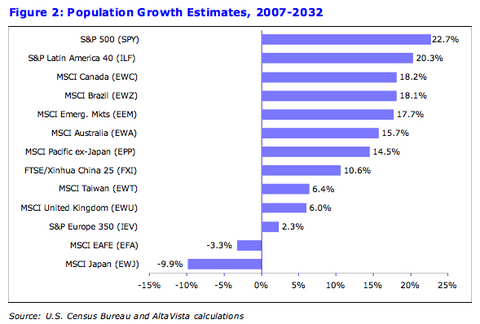
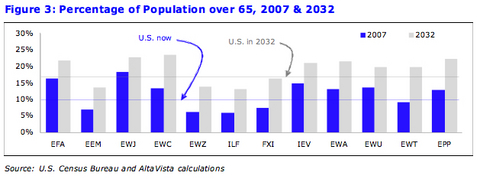

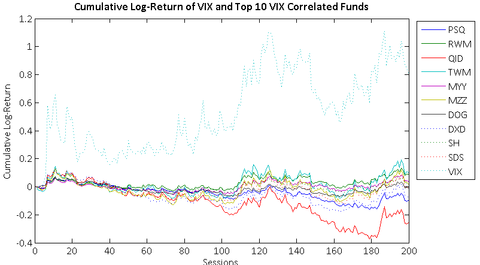

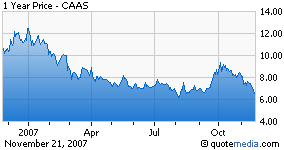




 Here's our summary of articles and data points on the housing market. It's part of Seeking Alpha's
Here's our summary of articles and data points on the housing market. It's part of Seeking Alpha's 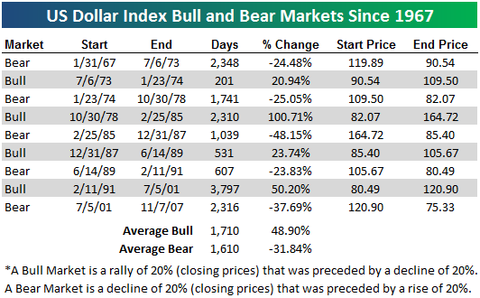










 Webvan --
Webvan --  Pets.com -- Started by Greg McLemore then bought by venture cap firm
Pets.com -- Started by Greg McLemore then bought by venture cap firm  Kozmo.com -- A great idea poorly executed.
Kozmo.com -- A great idea poorly executed.  Flooz.com -- Why spend dollars when you can use the internet's own new currency, "Flooz!" Why indeed?
Flooz.com -- Why spend dollars when you can use the internet's own new currency, "Flooz!" Why indeed?  eToys.com -- At first glance
eToys.com -- At first glance  Go.com -- As a web portal, Go.com became definitive proof that even the "old guard" weren't safe from blowing large amounts of money by investing in the tech industry. Created by the
Go.com -- As a web portal, Go.com became definitive proof that even the "old guard" weren't safe from blowing large amounts of money by investing in the tech industry. Created by the  Boo.com -- As Go.com proved that even the "old guard" weren't safe,
Boo.com -- As Go.com proved that even the "old guard" weren't safe,  GovWorks.com -- Founded by childhood friends
GovWorks.com -- Founded by childhood friends  MVP.com -- Your online sports equipment store! With
MVP.com -- Your online sports equipment store! With 




